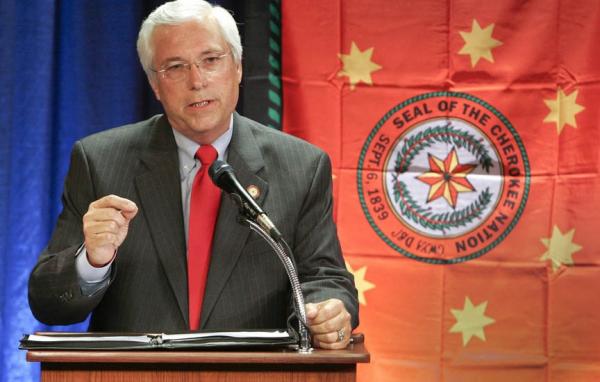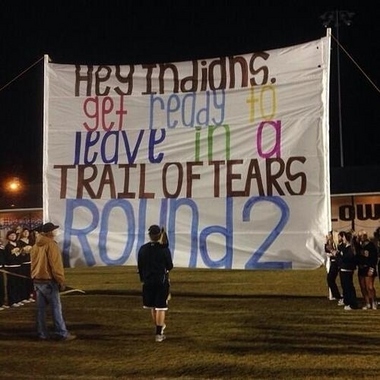
Cherokee Nation; Source: Indian Country Today Media Network
The Cherokee Nation has responded to an offensive banner displayed at an Alabama high school football game that has drawn national attention. The banner, made by McAdory High School students for a football playoff game, referenced the opposing team’s mascot, the “Indians,” by displaying the message: “Hey Indians, get ready to leave in a Trail of Tears, Round 2.”
RELATED: High School Slammed for Its Mocking and Shocking ‘Trail of Tears’ Banner
In the 1830s, the Cherokee Nation and many other tribes were forcibly removed from their homelands in Alabama and other states in the Southeast, and marched hundreds of miles to Indian Territory, now present-day Oklahoma. Cherokee Nation Principal Chief Bill John Baker issued the following statement.
“Ironically, the Cherokee Nation is commemorating the 175th anniversary of the start of our Trail of Tears this year. About 16,000 Cherokees began the trek to Oklahoma from our homelands in Alabama, Georgia, Tennessee, North Carolina, South Carolina and Kentucky, but only 12,000 lived through the harsh conditions that winter.
“ The Trail of Tears was arguably the most horrific period in the Cherokee Nation’s history and among the worst atrocities ever sanctioned by the United States government. The legacy of that terrible era has had a profound effect on generations of tribal citizens, and still lingers today. This unfortunate display shows how much improvement is still needed in the understanding of Native peoples, our triumphs and our challenges, both historical and modern.
“We hope this becomes an opportunity for administrators at McAdory High School, and at schools all across the United States, to teach our young people not only the terrible history behind the Indian removal era, but also the resilience of tribes across the nation.”
November is also Native American Heritage Month. To learn more about observances this month, please visit NativeAmericanHeritageMonth.gov.
RELATED: Principal Apologizes for ‘Trail of Tears’ Banner—Makes it a Teaching Moment
Read more at http://indiancountrytodaymedianetwork.com//2013/11/20/cherokee-nation-responds-offensive-trail-tears-banner-152345



